

Matt Campbell
2025 Volvo XC90 review
4 Days Ago

Contributor
Lotus has detailed the lightweight architecture that’ll underpin its future electric sports cars.
Developed under Project LEVA (Lightweight Electric Vehicle Architecture), this platform is set to underpin the brand’s all-electric sports car, scheduled for launch in 2026 and codenamed Type 135.
This all-electric platform may also underpin future Lotus sports cars, as well as cars for third-party clients.
It’s also set to underpin a future electric sports car from Alpine.
Lotus says the platform can be used for both two-seater and longer-wheelbase 2+2 models with single- or dual-motor powertrains.
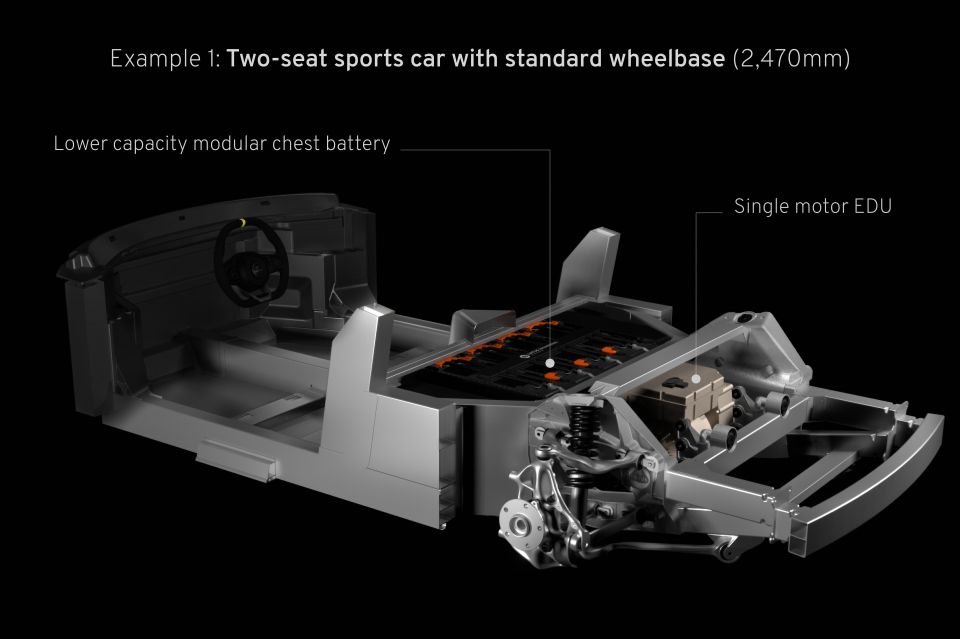
Designed in collaboration with supply chain partner Sarginsons Industries and academics from Brunel University in London, the Project LEVA platform has been designed with Lotus’ lightweight ethos in mind.
Compared to the Lotus Emira V6, the all-electric platform has a 37 per cent lighter rear subframe.
This platform will offer the flexibility of two different subframes in a chest or slab layout.
The ‘chest layout’, as seen on the Evija hypercar, will be used in electric sports car or hypercar applications with the battery modules mid-mounted. It’s ideal for keeping a low centre of gravity and ride height.
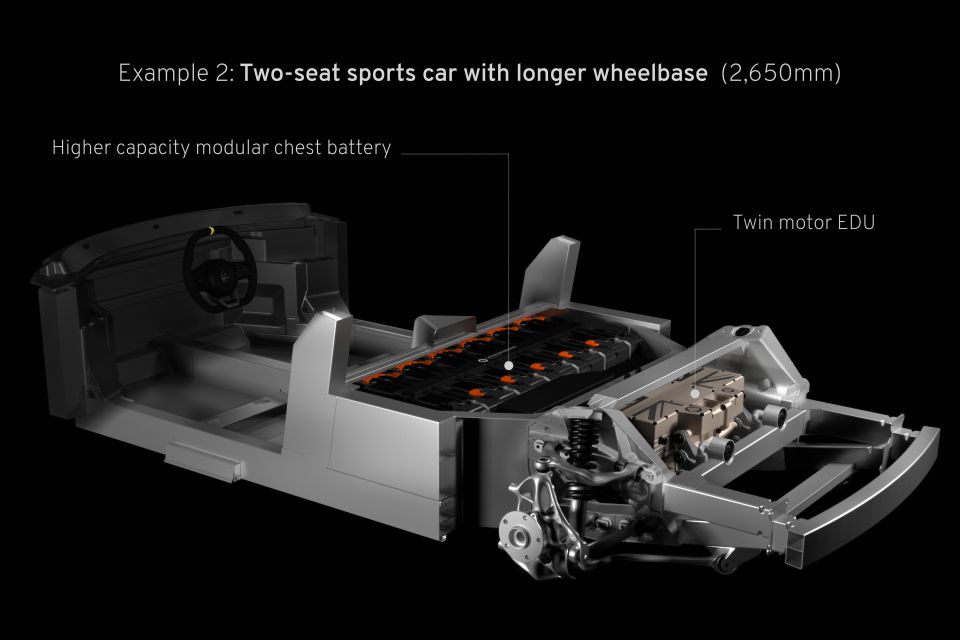
The ‘slab layout’, on the other hand, will be used in SUVs or higher-riding electric vehicles with the battery modules located under the cabin in a skateboard form.
Depending on the subframe layout, the platform allows the flexibility of a single or twin electric drive unit (EDU) setup.
Lotus detailed the following technical specifications for sports cars on the Project LEVA platform:
| Vehicle layout | Wheelbase | Battery size/configuration | Maximum battery power | Electric motor layout/max power |
|---|---|---|---|---|
| Two-seater | Minimum of 2,470mm | 8-module / chest | 66.4kWh | Single / 350kW |
| Two-seater | More than 2,650mm | 12-module / chest | 99.6kWh | Twin / 650kW |
| 2+2 | More than 2,650mm | 8-module / slab | 66.4kWh | Single / 350 kW or Twin / 650kW |
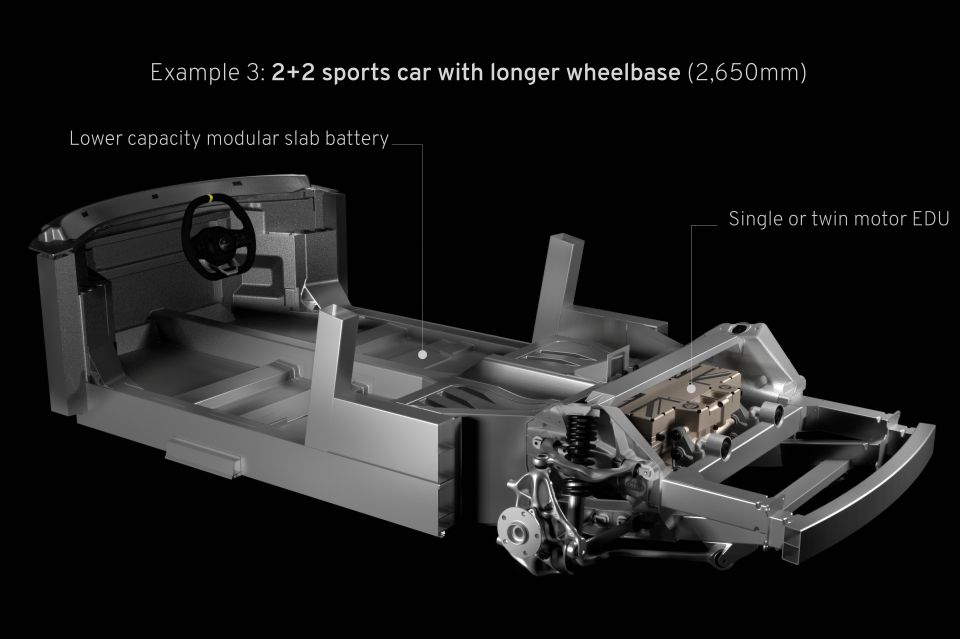
Inside this new platform there are cylindrical battery cells, rather than traditional rectangular cells, for high energy density.
Lotus is in the process of rolling out four new platform architectures:
It’ll launch four EV models by 2026. This includes a four-door coupe, two SUVs and an all-electric sports car.
In 2022, Lotus will debut the Type 132 Porsche Cayenne-sized electric SUV, as well as the Type 133 Mercedes-Benz CLS-sized EV.
Following in 2025, the company says it will launch the Type 134, a D-segment SUV.
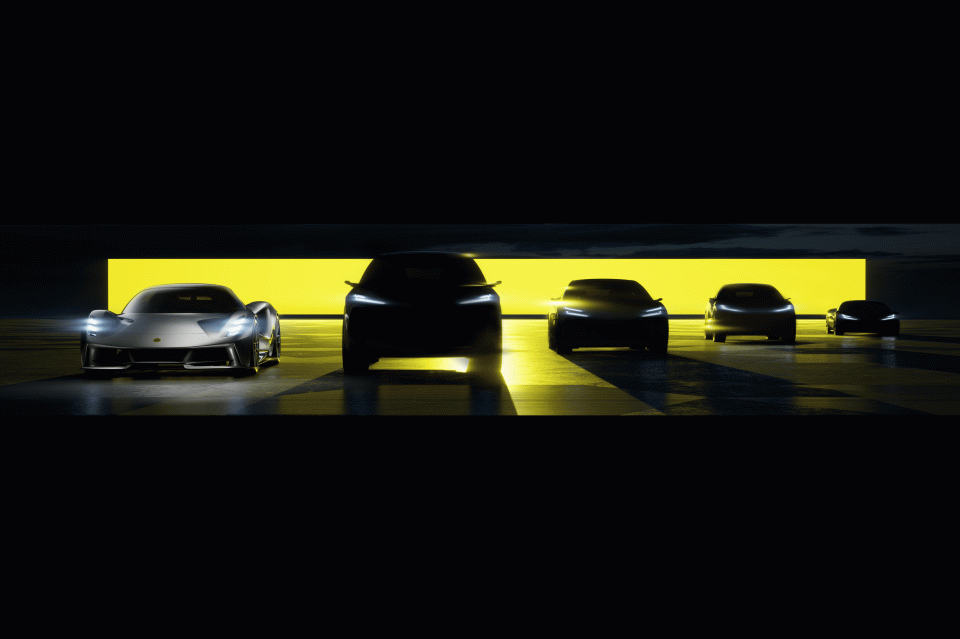
These three models will be built in Wuhan, China, which will also be home to the headquarters of the new Lotus Technology division.
Their Premium architecture has been designed to accommodate C-E segment vehicles and can support wheelbases of between 2889mm and 3100mm.
Vehicles on this architecture will use 92-120kWh batteries with an 800V charging system, and will be capable of 0-100km/h times of under three seconds.
To complete its plan, Lotus is planning to launch the Type 135, an all-electric sports car, in 2026 using the Project LEVA platform.
These upcoming models will be sold alongside the Evija hypercar and the Emira, Lotus’ last petrol-powered car.
Where expert car reviews meet expert car buying – CarExpert gives you trusted advice, personalised service and real savings on your next new car.
Jack Quick is an automotive journalist based in Melbourne. Jack studied journalism and photography at Deakin University in Burwood, and previously represented the university in dance nationally. In his spare time, he loves to pump Charli XCX and play a bit of Grand Theft Auto. He’s also the proud owner of a blue, manual 2020 Suzuki Jimny.


Matt Campbell
4 Days Ago


James Wong
3 Days Ago


CarExpert.com.au
2 Days Ago
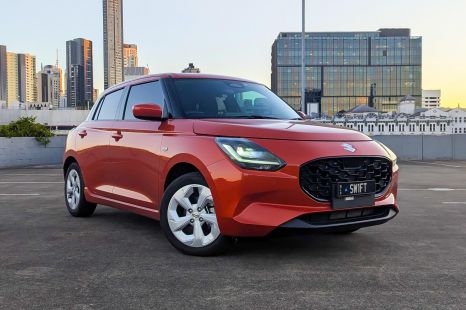

William Stopford
2 Days Ago


Max Davies
1 Day Ago
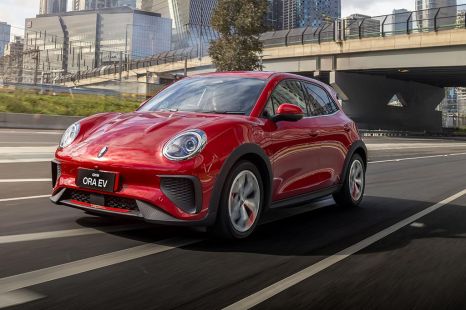

Damion Smy
14 Hours Ago
Suggested Comparisons